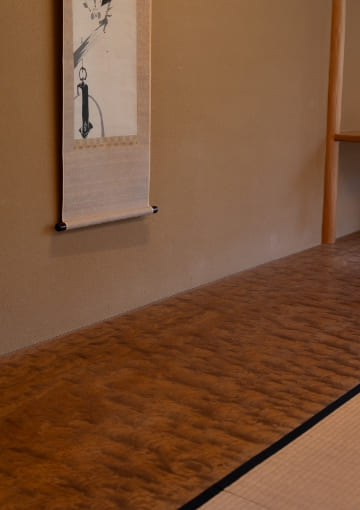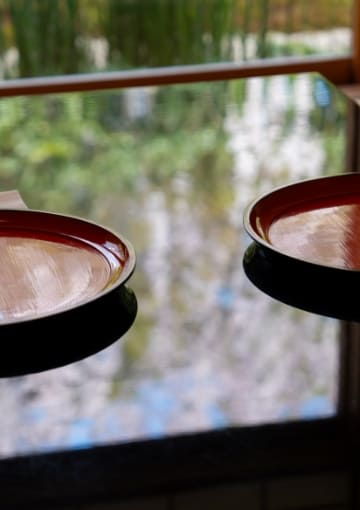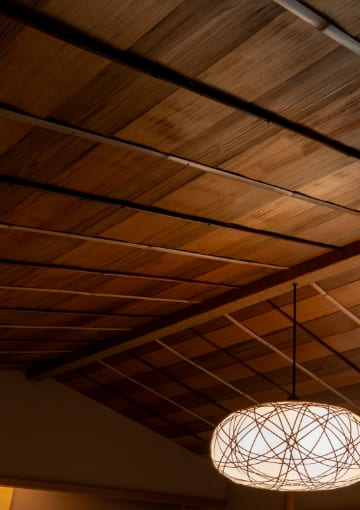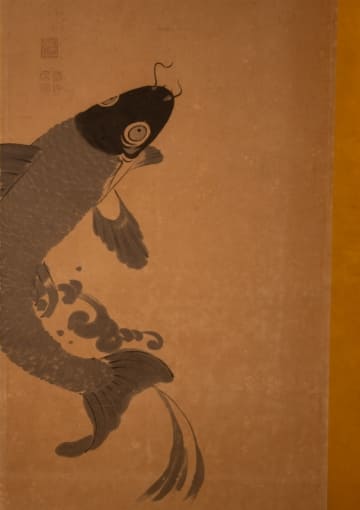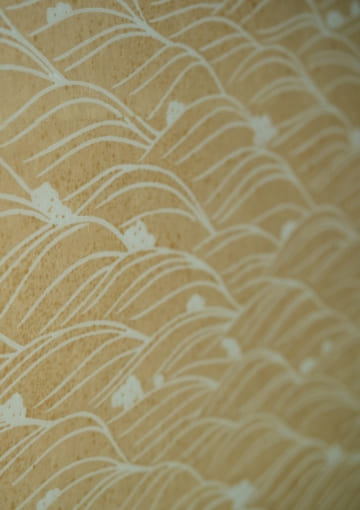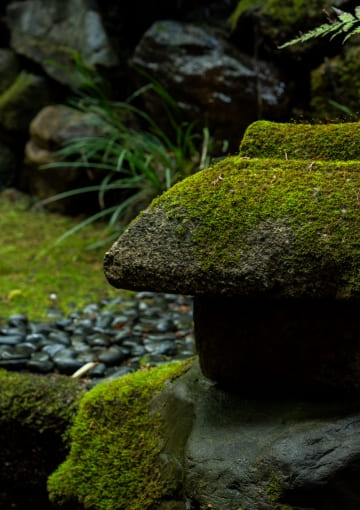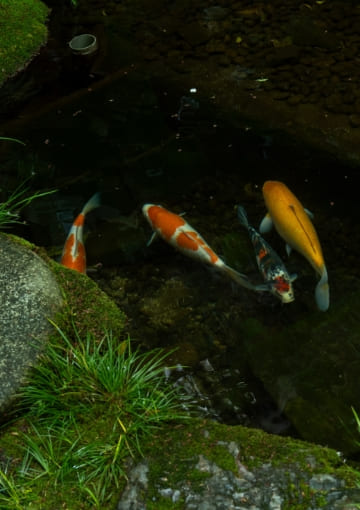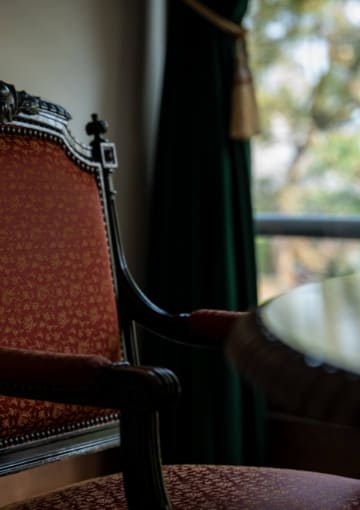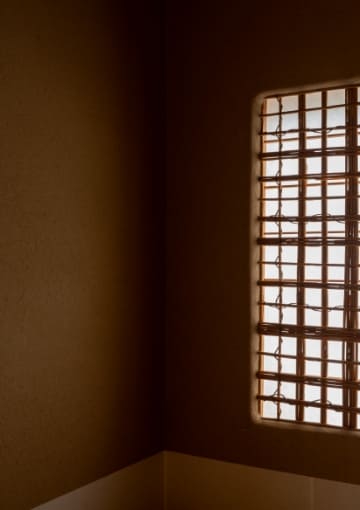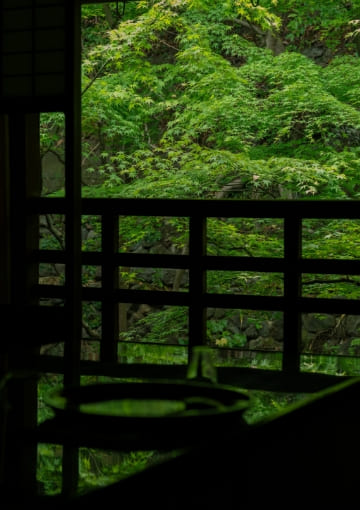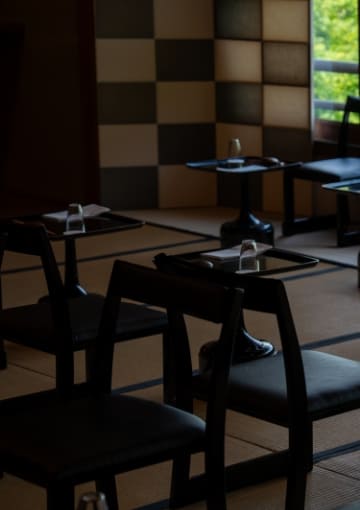牡丹の間 BOTANNOMA 4
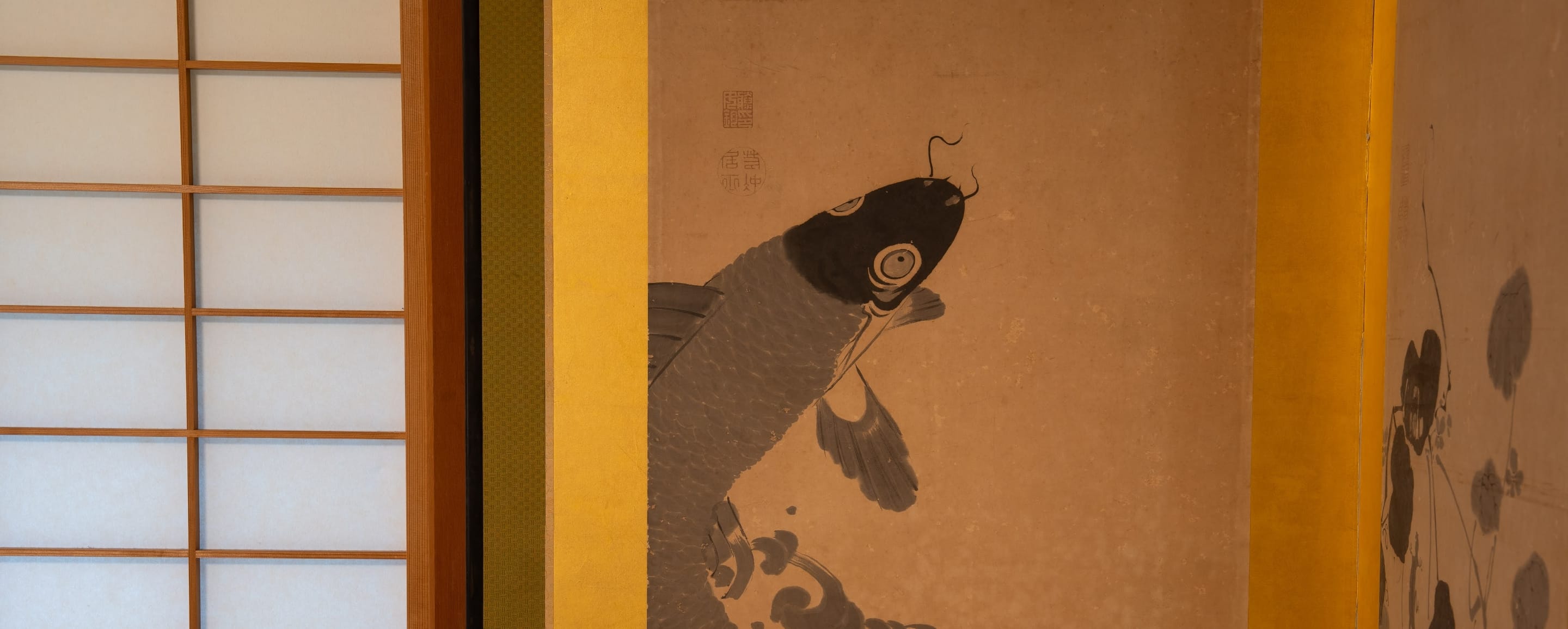
心をうるおす、
水辺に佇むような情景。
町を囲む山々を水源とした川、水盆と言われるほど豊かな地下水。古くから京都は水の恵みによって、暮らしや文化を潤してきました。日本料理は水の料理だと言われ、菊乃井も北政所が茶の湯に使った「菊水の井」を守り続けてきた家として、水のモチーフを随所に生かしています。牡丹の間は、水辺に佇むかのような庭の眺めがあり、波を表した明障子が柔らかいアクセントに。
A scene that soothes the heart; a spectacle by the water’s edge
In Kyoto, the rivers spring from the surrounding mountains, and underground water is so abundant that the city is often referred to as a water basin. Since time immemorial, Kyoto residents have been graced with the blessing of water, which has benefitted people’s lives and the local culture. Japanese cuisine is known as ‘water’ cuisine; Kikunoi continues to maintain the Kikusui-no-i well which was used by Kitano Mandokoro, lord Toyotomi Hideyoshi’s wife, in tea ceremonies. Within Botan-no-ma (literally the ‘peony room’), guests will find water motifs at every turn. In this room, guests are offered a view of a garden that feels like they’re standing by the water’s edge, and the wave-patterned akari-shōji sliding doors add a gentle accent to the room.
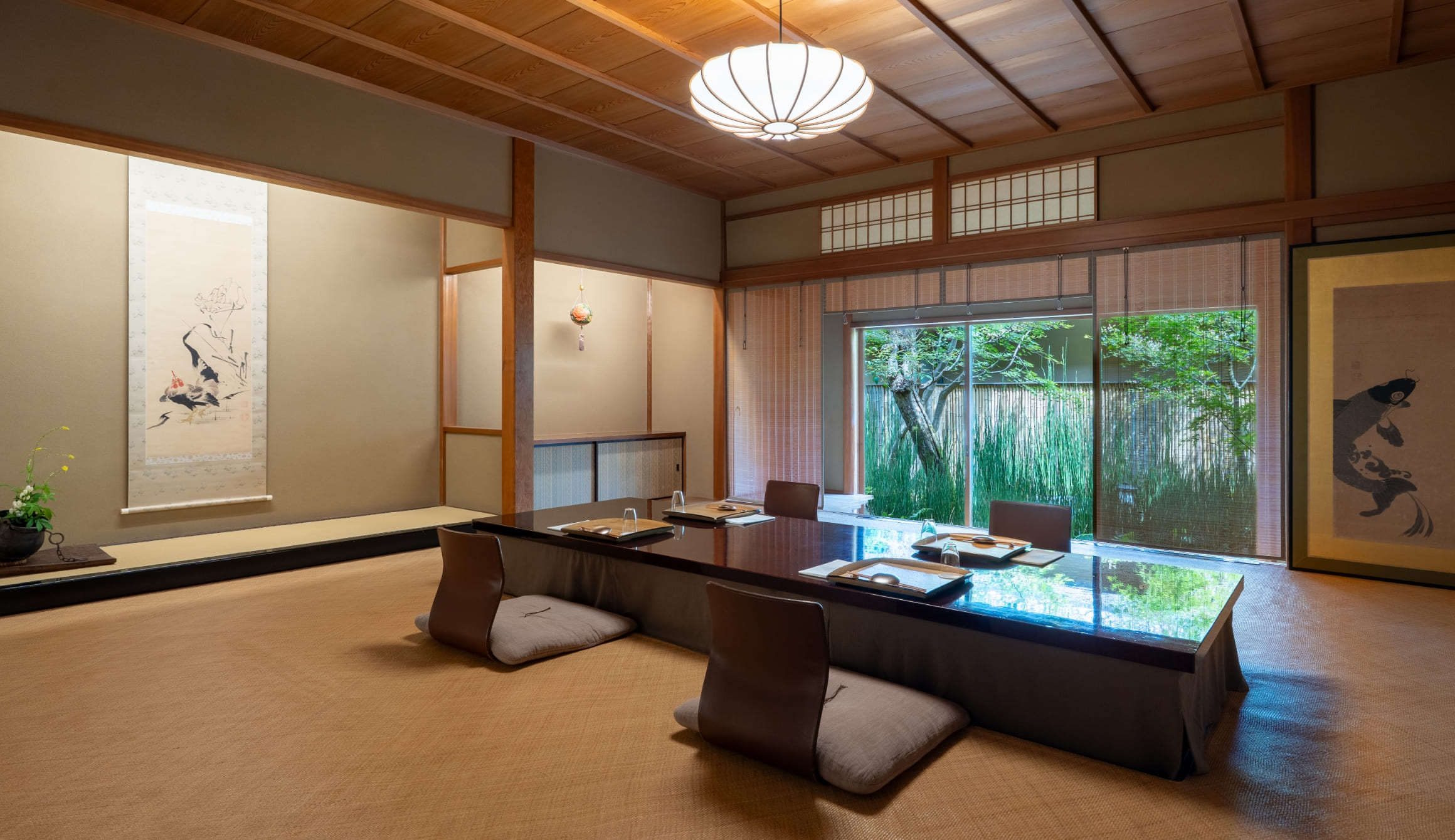
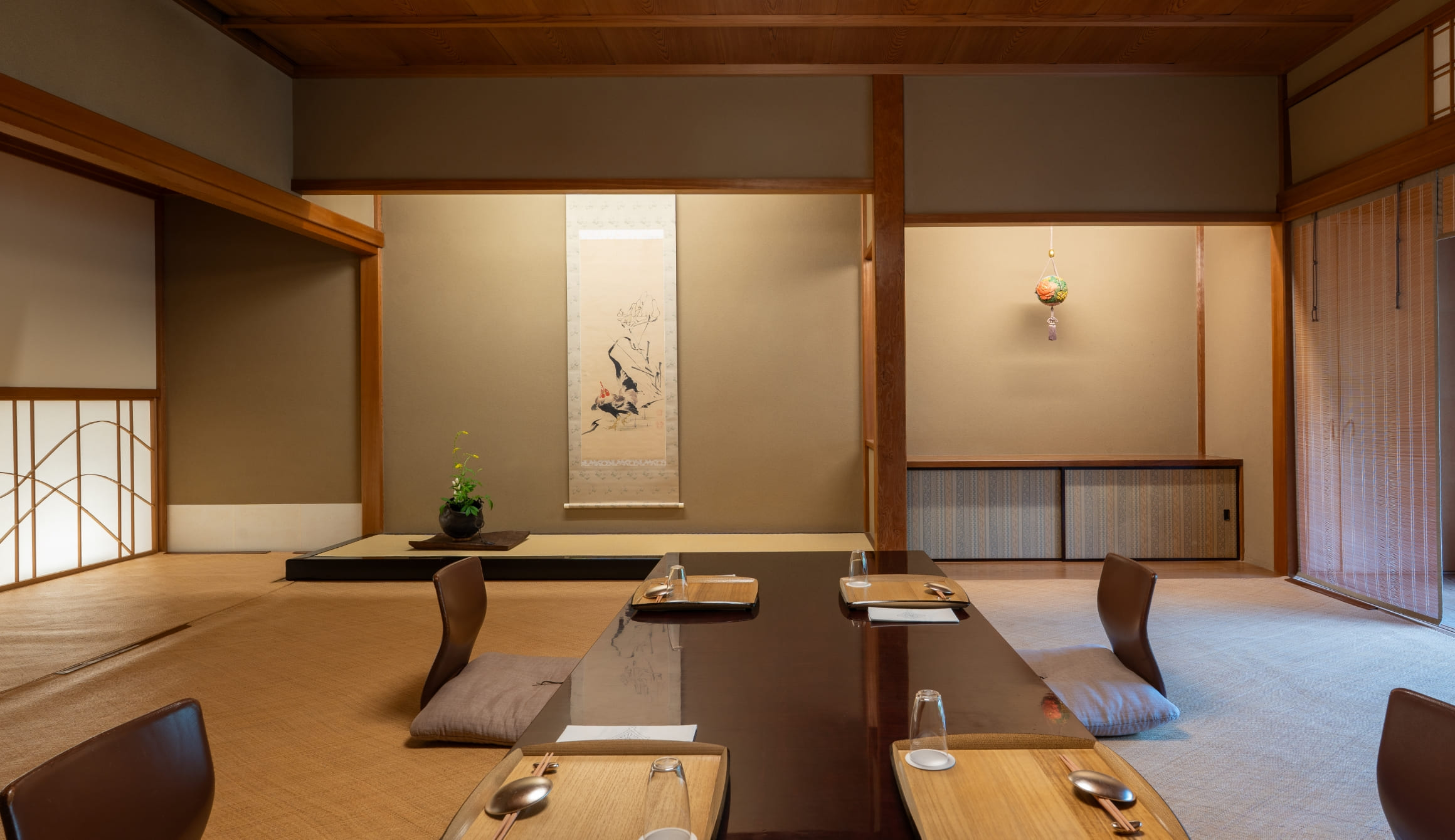
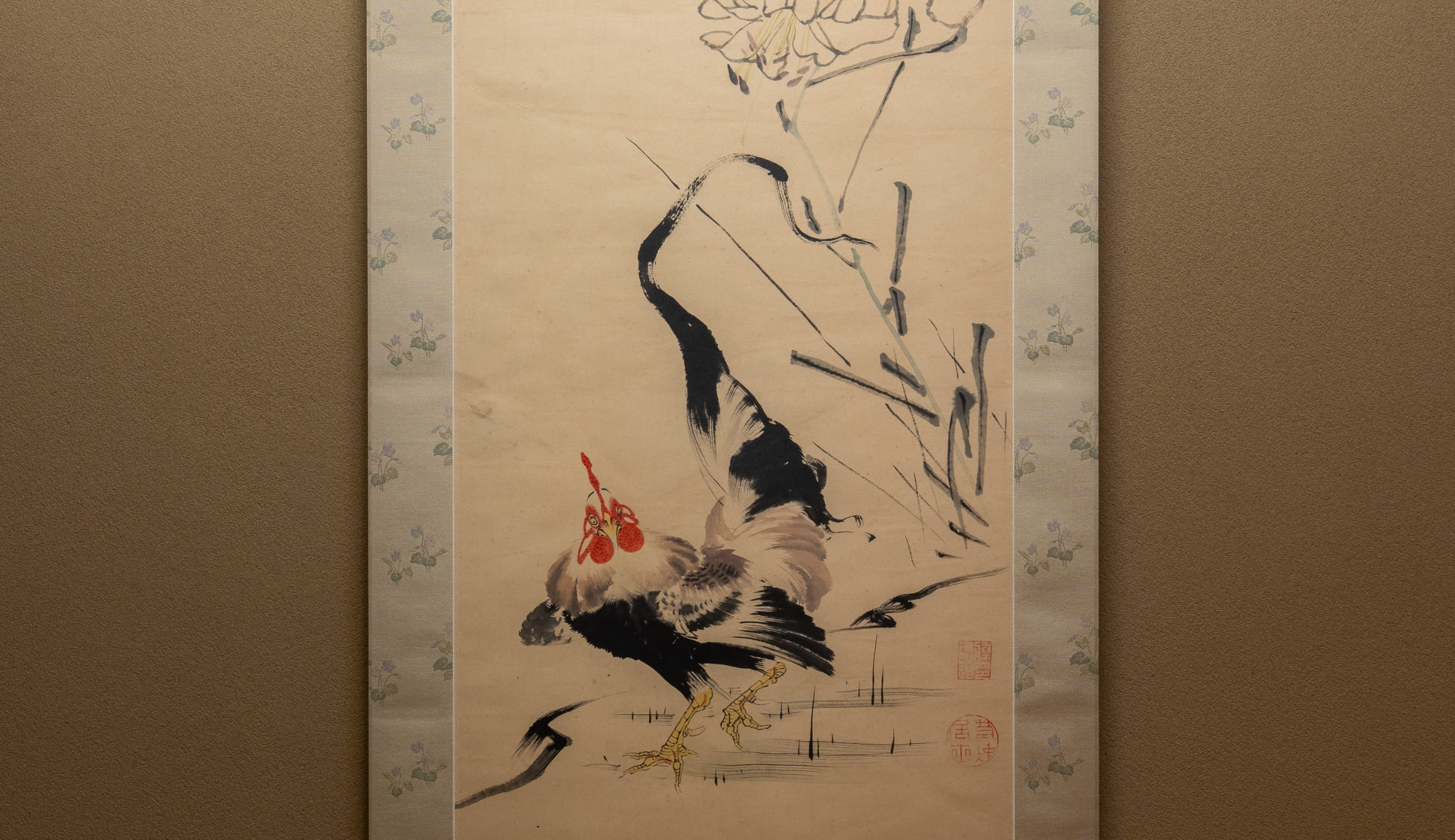
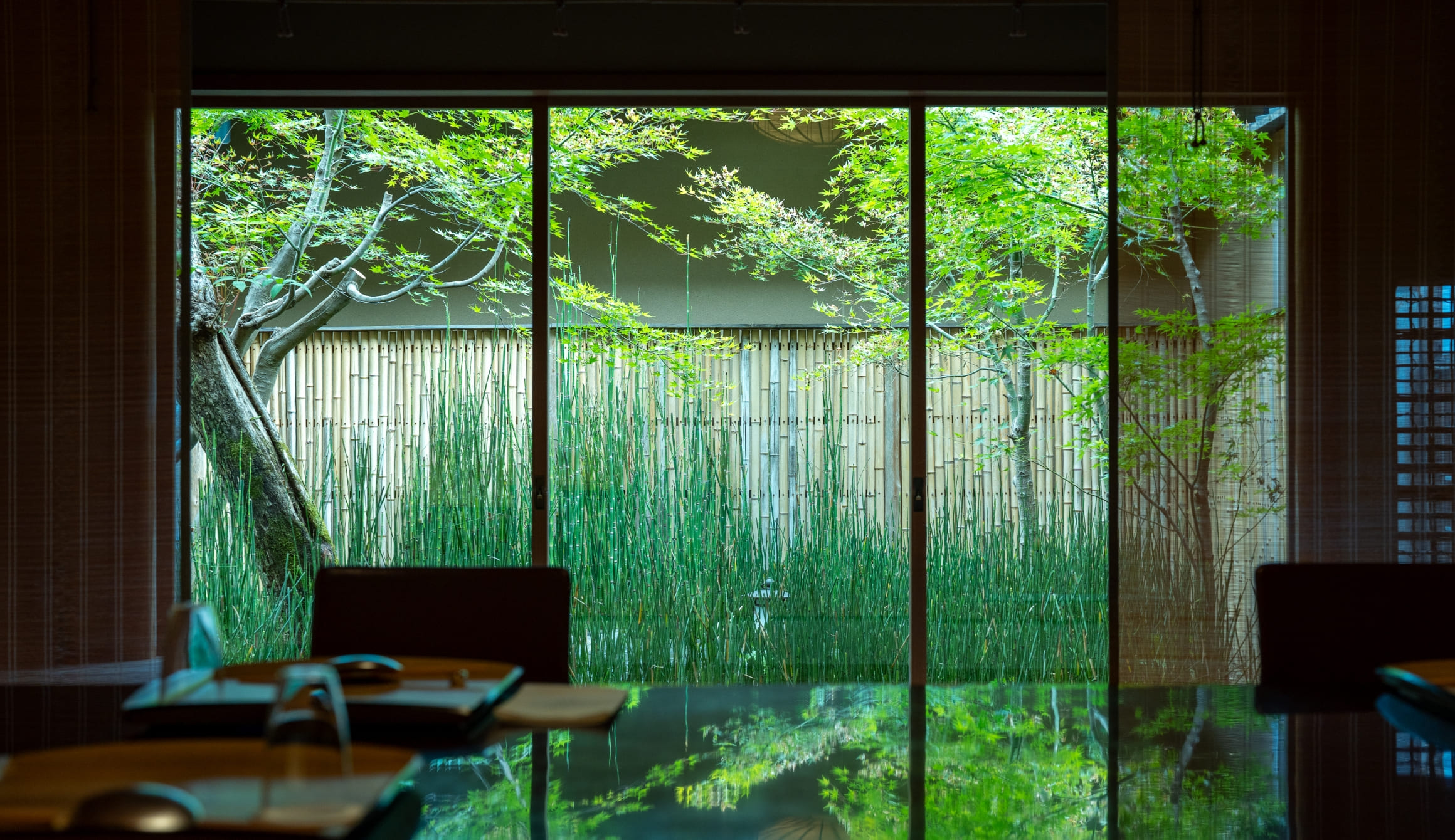
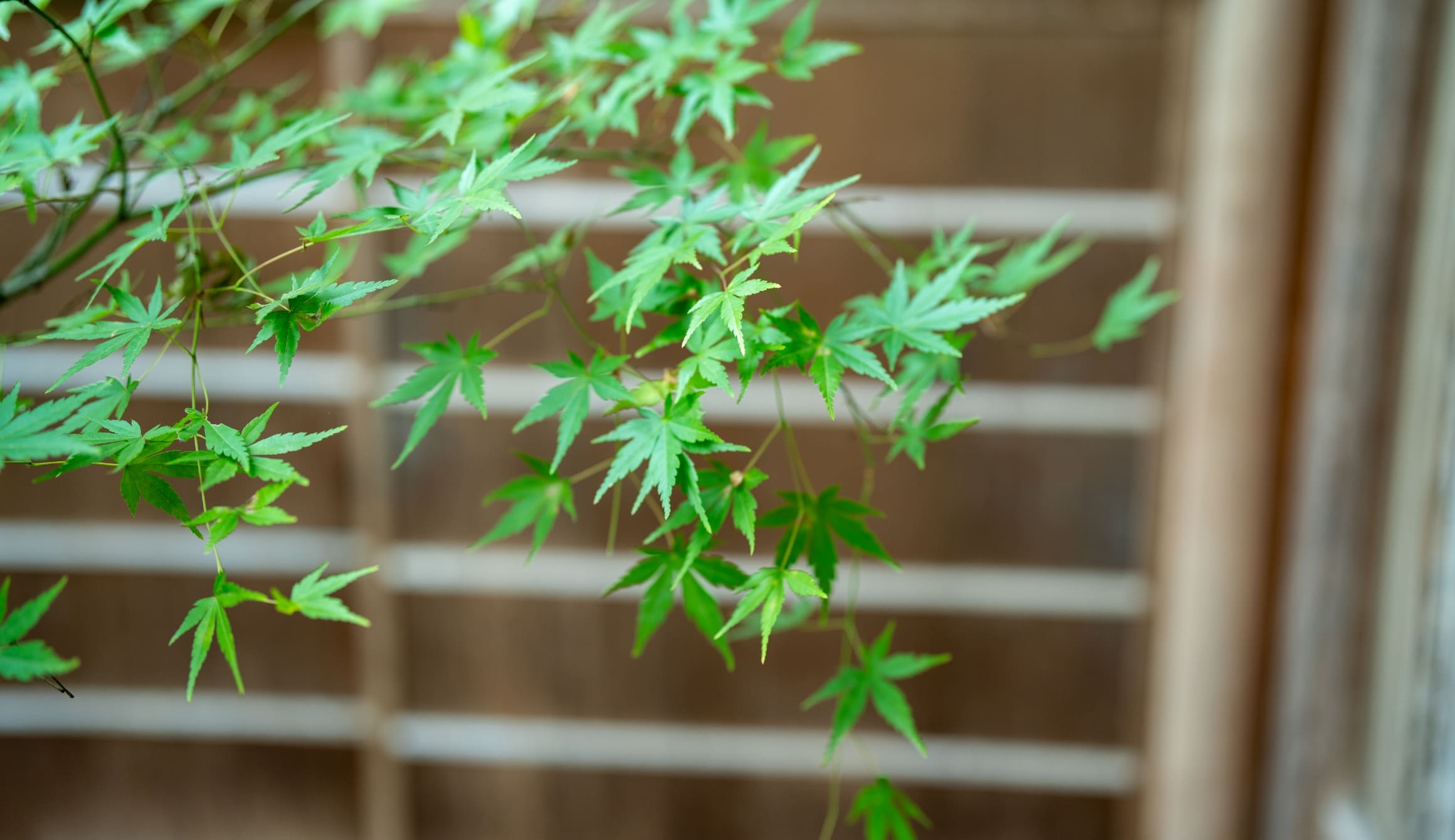
Details
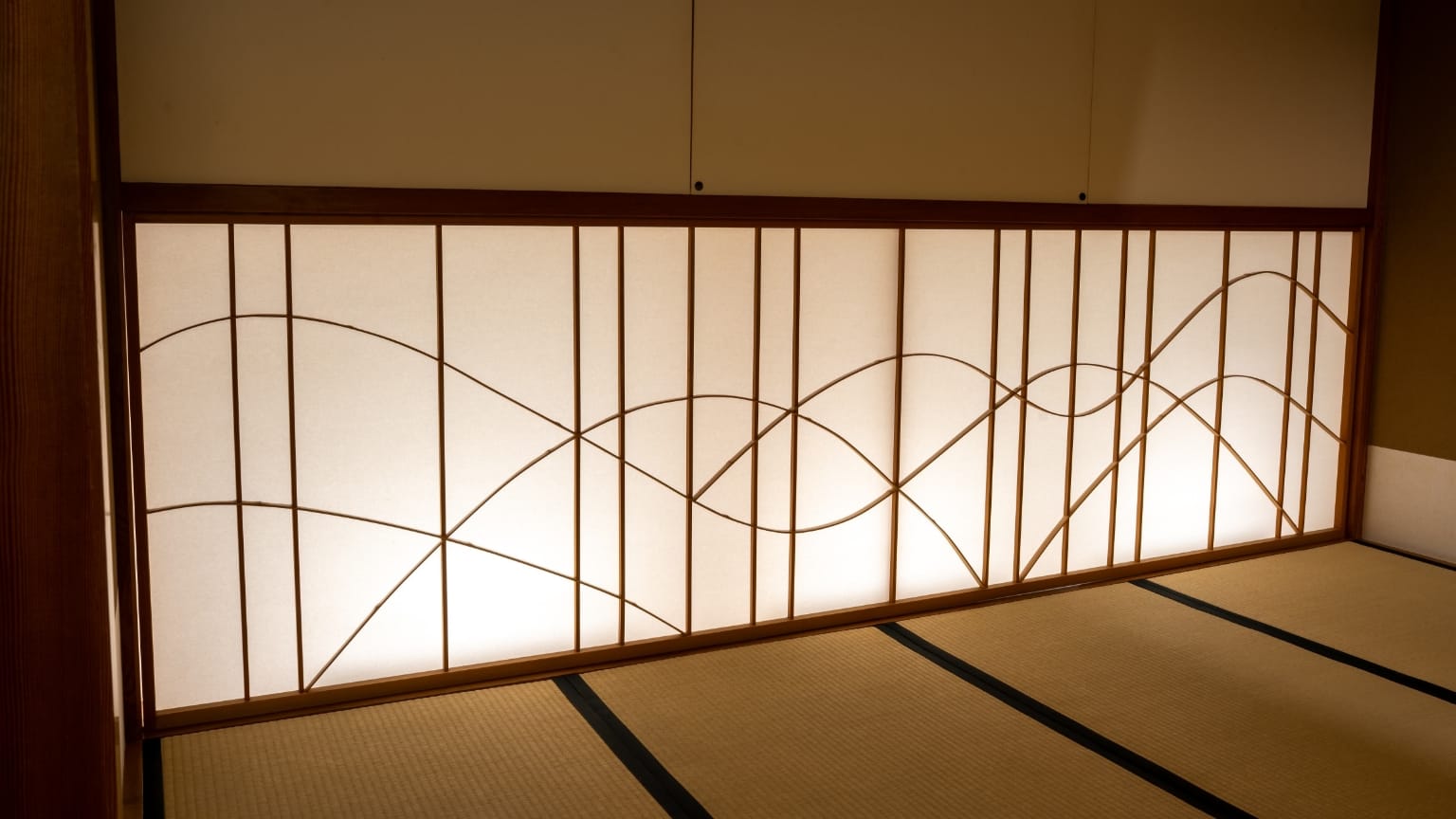
波打つ水面のように竹が曲線を描く明障子。光が優しく映ります。
The akari-shōji sliding doors with their curved bamboo, like rolling waves. They provide the room with soft lighting.
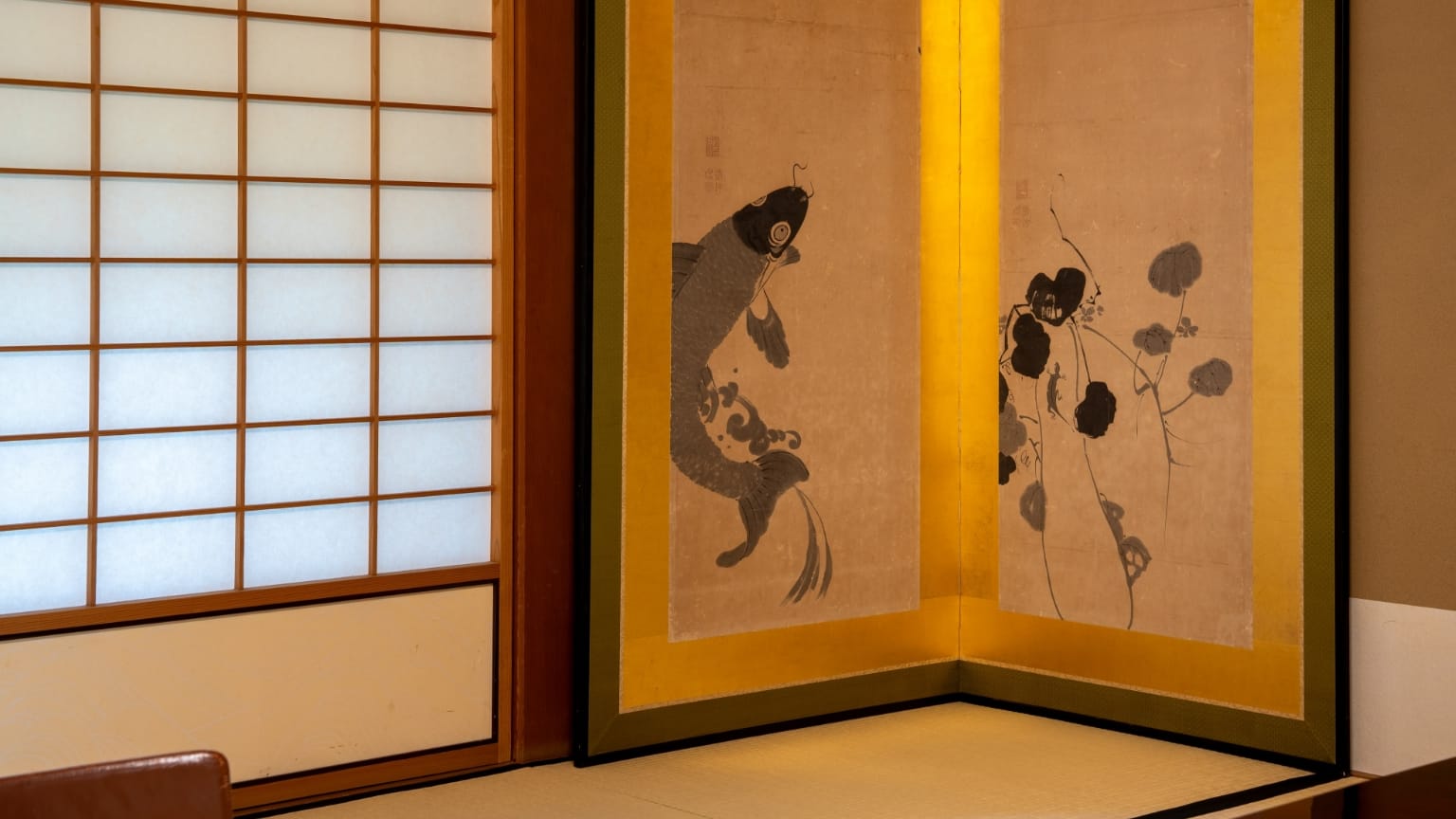
またの名を若冲の間。所蔵する伊藤若冲の作品20余点から常時1~2点がこの部屋に。
The room is also known as the Jakuchu-no-ma, after the one or two works on display by Edo-period painter Ito Jakuchu. Kikunoi holds a collection of over 20 of his works.
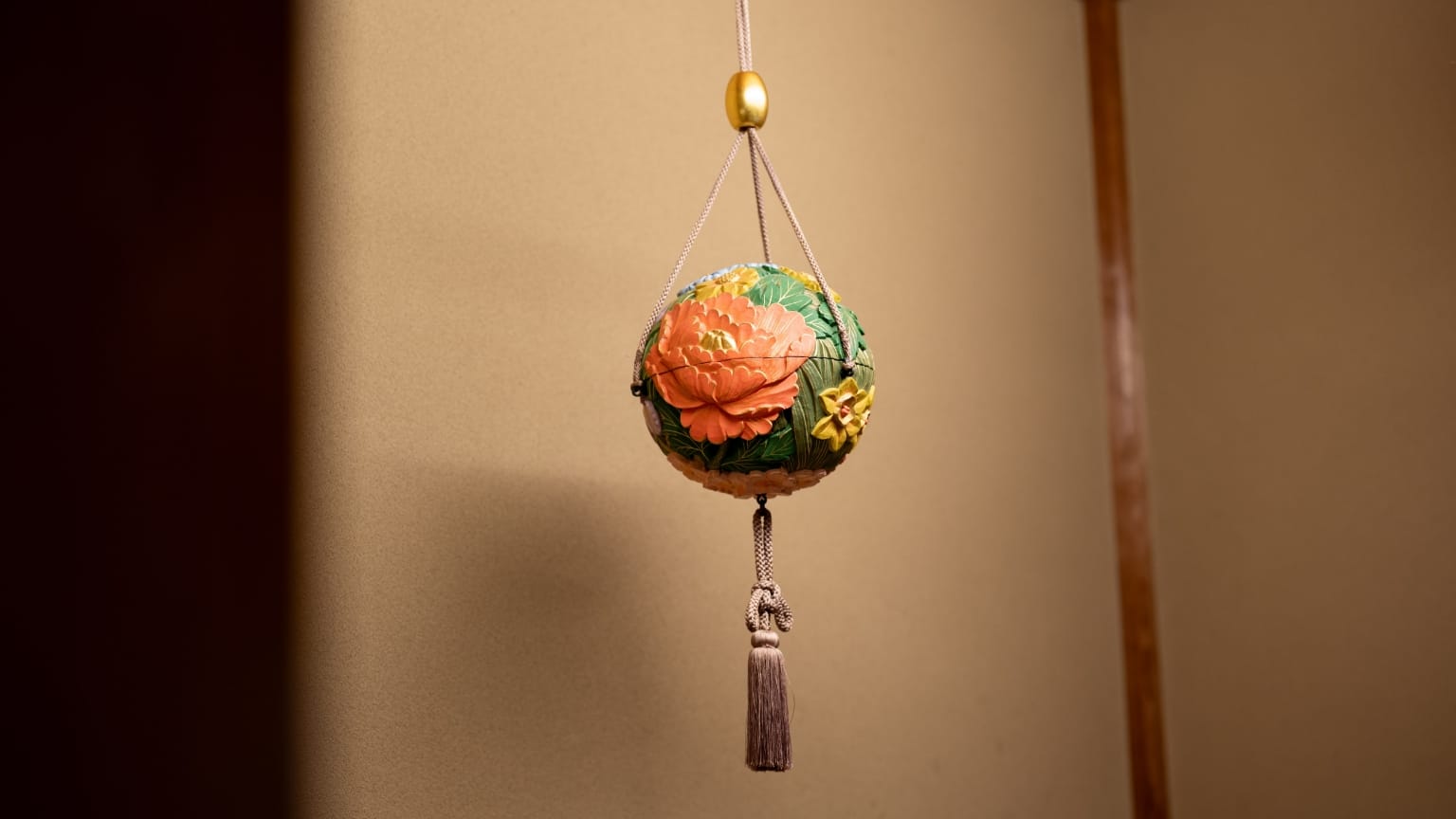
くす玉のような吊り香炉。咲き誇る花々を有職人形師が鮮やかに彩色。
A hanging censer in the likeness of a decorative kusudama ball. The blossoms depicted were vividly colored by a skilled doll maker.
